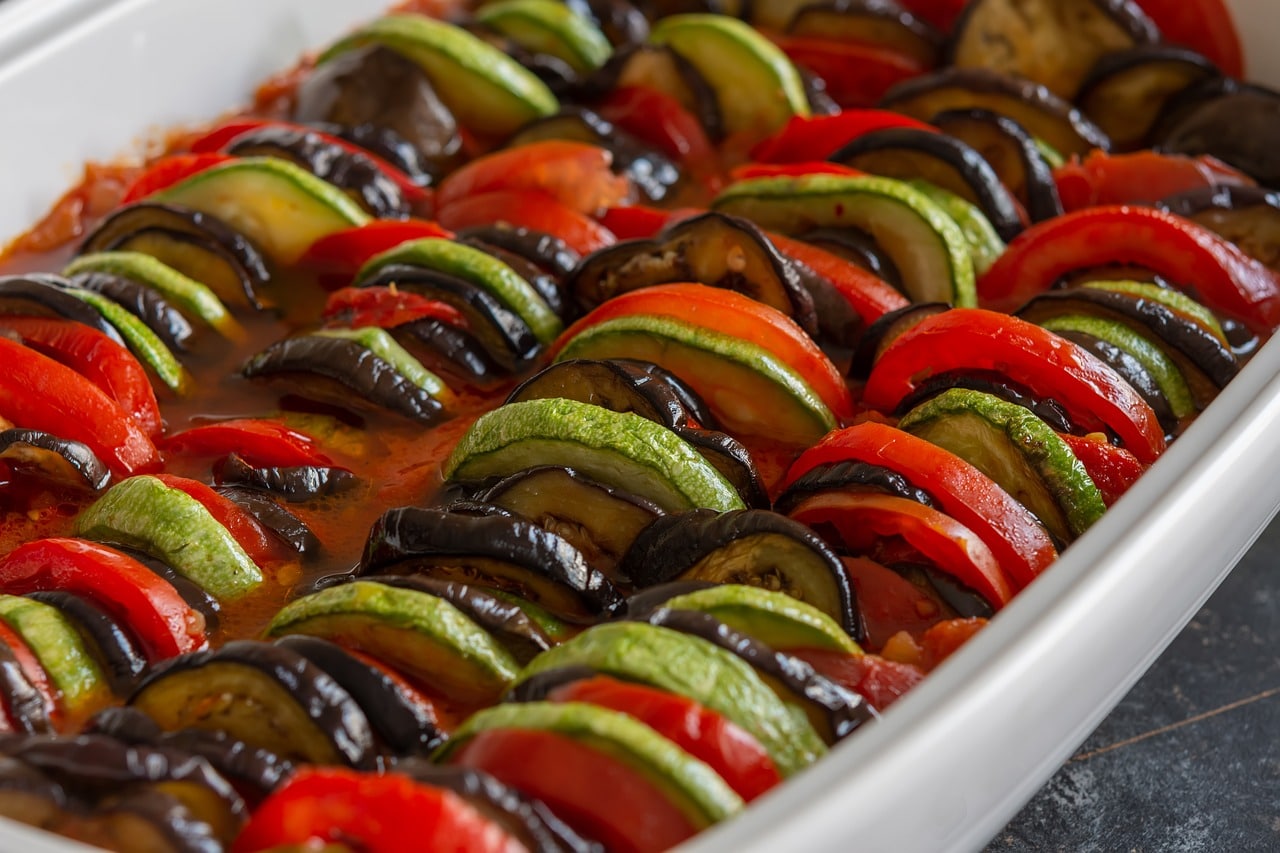How Can You Create a Classic French Ratatouille That Impresses?

Ratatouille. The mere mention of the word evokes images of the French countryside, a bubbling pot on the stove, and the rich aroma of vegetables and herbs filling the air. This classic French dish, celebrated in movies and cookbooks alike, is a medley of fresh summer vegetables simmered slowly in a tomato sauce until they meld together in a harmony of flavors. If you’ve ever wanted to try your hand at cooking this beloved dish, we are here to guide you every step of the way.
What is Ratatouille?
Ratatouille is more than just a dish; it’s a culinary representation of the Provençal region in France, highlighting their abundant summer vegetable harvest. This is a dish that sings of sun-ripened tomatoes, shiny bell peppers, crisp eggplant, and tender zucchini.
A découvrir également : What’s the Best Way to Cook with Exotic Truffles?
To the uninitiated, it may seem like a simple vegetable stew, but Ratatouille is far from ordinary. It’s a slow-cooked blend of vegetables, each cooked separately before being combined into a savory masterpiece. The dish is not just a medley of flavors, but also of colors, textures, and aromas, making it a feast for the senses.
The Perfect Ratatouille Recipe
Cooking Ratatouille is an exercise in patience and appreciation for fresh, high-quality ingredients. It’s not about rushing; it’s about taking your time to ensure each ingredient gets the respect it deserves. Here’s a recipe that will help you create an impressive Ratatouille.
Avez-vous vu cela : Can You Bake a Gourmet Quiche Lorraine with a Buttery Crust?
Ingredients
- 1 large eggplant
- 1 large zucchini
- 2 bell peppers (one red, one yellow)
- 1 large onion
- 5 cloves of garlic
- 4 ripe tomatoes
- Fresh thyme and basil
- 1/3 cup of olive oil
- Salt and pepper to taste
The Process
Step 1: Prep the Vegetables
Start by washing and cutting your vegetables. The eggplant and zucchini should be cut into thick slices and then quartered. The bell peppers should be deseeded and cut into chunks. The onion and garlic need to be thinly sliced, and the tomatoes should be diced.
Step 2: Sauté the Eggplant and Zucchini
Heat a bit of the oil in a large pan and add the eggplant and zucchini. Allow them to cook for about 15 minutes, or until they’re slightly golden and softened. Remove them from the pan and set them aside.
Step 3: Cook the Bell Peppers and Onion
Add a bit more oil to the pan, along with the bell peppers and onion. Cook these for about 10 minutes, or until they’re softened and slightly caramelized.
Step 4: Add the Garlic and Tomatoes
Next, add the garlic to the pan with the peppers and onion. Allow it to cook for about a minute before adding the tomatoes, along with some thyme, salt, and pepper. Let this mixture cook for about 15 minutes.
Step 5: Combine Everything
Lastly, add the sautéed eggplant and zucchini back into the pan with the tomato mixture. Stir everything together and let it cook for another 15 minutes.
Ratatouille: A Versatile Dish
One of the best things about Ratatouille is its versatility. While it’s traditionally served as a side dish, it can also be a meal all on its own, especially if you add some protein like grilled chicken or tofu. It’s also fantastic over pasta, polenta, or a slice of crusty bread.
Ratatouille is even better the next day, as the flavors continue to meld and intensify overnight. This makes it a great dish to make ahead if you’re hosting a dinner party or just want to take the stress out of weeknight cooking.
Final Words on Ratatouille
Ratatouille is an impressive dish, not because it’s fancy or complicated, but because it’s a humble, honest celebration of vegetables. It’s a dish that takes time, love, and patience, but your efforts will be rewarded with a dish that is comforting, flavorful, and deeply satisfying.
Remember, cooking should never be a chore, but a joy. And nothing brings more joy than sharing a delicious meal with the ones you love. So, roll up your sleeves, gather your ingredients, and get ready to cook a classic French Ratatouille that will impress everyone at your table.
Cooking Techniques For Ratatouille
Mastering the technique of sautéing is key to achieving a great ratatouille. This cooking method involves using a small amount of fat, such as olive oil, in a hot pan and then cooking the ingredients at high heat to retain their natural flavors and shapes.
For ratatouille, each vegetable is sautéed separately, ensuring its own unique flavor and texture are preserved. This process requires patience, but the result is a dish where each component plays its part, yet comes together to create an orchestrated symphony of flavors.
Moreover, the use of herbs de provence, a blend of dried herbs typical of the Provence region in France, lends an aromatic bouquet to the dish. Key ingredients in this blend include thyme, rosemary, and basil. These herbs provide a savory contrast to the natural sweetness of the vegetables.
Don’t forget to season your vegetables with salt and pepper as they cook. This will not only enhance their individual flavors but also help to draw out their natural juices, enriching the overall flavor of the dish.
Finally, the use of tomato paste or sauce is vital. The slow simmering of the vegetables in the tomato sauce allows the flavors to meld together, creating a rich and hearty dish that is both nutritious and flavorful.
The History and Evolution of Ratatouille
The origins of ratatouille are rooted in Nice, a city located in the Provence region of France. The word "ratatouille" derives from the French term "touiller", which means to stir or toss. The dish was traditionally a peasant dish, made by farmers and their families during the harvest season using fresh summer vegetables.
Over time, ratatouille has evolved from a simple side dish to a full meal, and can now be found in various iterations worldwide. In fact, in modern interpretations of the dish, chefs often add proteins like chicken or tofu, or even serve it over pasta or bread.
In spite of its evolution, the heart of ratatouille remains the same – it’s a celebration of fresh, seasonal vegetables, cooked with care and patience to bring out their best flavors.
Conclusion: The Joy of Cooking Ratatouille
Creating a classic French ratatouille is a labor of love, requiring time, patience, and quality ingredients. However, the process is as rewarding as the final dish itself. The act of slowly sautéing each vegetable, watching them transform under the heat, and finally witnessing the amalgamation of flavors is a culinary experience in itself.
The beauty of ratatouille lies in its simplicity and flexibility. It’s a dish that can be easily adapted to suit your personal taste or dietary requirements. You can experiment with different vegetables, add extra herbs for more flavor, or try adding protein to make it a main course.
So, whether you’re a seasoned cook or a beginner in the kitchen, give this classic French dish a try. With fresh ingredients, some quality olive oil, and a little bit of patience, you’ll be able to make a ratatouille that’s not just delicious, but a testament to your culinary prowess.
In the end, it’s not just about the ratatouille recipe, but the joy of cooking, experimenting, and sharing good food with loved ones. So go ahead, take the plunge and create a classic French Ratatouille that will impress everyone with its depth of flavor and vibrant colors. Happy cooking!
